Brother Orchid

Brief Synopsis
Cast & Crew
Lloyd Bacon
Edward G. Robinson
Ann Sothern
Humphrey Bogart
Donald Crisp
Ralph Bellamy
Film Details
Technical Specs

Synopsis
Gang leader Little John Sarto quits his protection association to see the world as a gentleman, leaving his girlfriend Flo Addams behind. After five years of chasing "class," Sarto returns broke to resume his leadership, only to find that Jack Buck has taken over and that Flo has prospered in her own business with cowpoke Clarence Fletcher. Sarto organizes a new gang and is rapidly muscling in on his old territory when Flo inadvertently sets him up as a target for Buck's boys. Badly wounded, Sarto manages to crawl to a monastery where, rechristened Brother Orchid, he is nursed back to health and influenced by the kindness of the good brothers, he begins to change his outlook on life. When he learns that Flo is to marry Clarence and that the monastery is suffering financial hardship because Buck refuses to allow the brothers to market their flowers, however, Sarto leaves his sanctuary, stops the wedding and, with Clarence's help, breaks up the protective association. His task accomplished, Sarto decides that he has found true class within the walls of the monastery, and so leaves Flo to Clarence and returns to his life as "Brother Orchid" in the Order of the Flowers.

Director

Lloyd Bacon
Cast

Edward G. Robinson

Ann Sothern

Humphrey Bogart
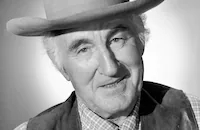
Donald Crisp

Ralph Bellamy

Allen Jenkins
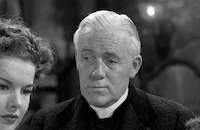
Charles D. Brown

Cecil Kellaway
Morgan Conway

Richard Lane
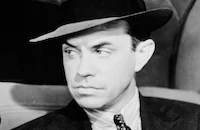
Paul Guilfoyle

John Ridgely

Joseph Crehan

Wilfred Lucas
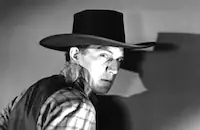
Tom Tyler
Dick Wessel
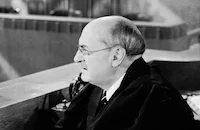
Granville Bates
Paul Phillips
Don Rowan
Nanette Vallon
Joe Caits
Tim Ryan
Pat Gleason
Tommy Baker
G. Pat Collins

John Qualen

Leonard Mudie
Charles Coleman
Edgar Norton
Jean Del Val

Armand Kaliz
Charles De Ravenne
Gino Corrado
Paul Porcasi
George Sorel
George Renavent
De Wolfe Hopper
George Haywood
Creighton Hale
Sidney Bracy
Louis Natheaux
Jimmy Aye
Mary Gordon
Frank Faylen
Claude Wisberg
Frank Moran
Harlan Briggs
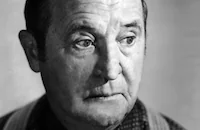
Frank Orth

James Flavin
Jack Kenney
Terry Nibert

Edward Mcwade
Sam Mcdaniel
Max Hoffman Jr.

Lee Phelps
Louise Carter
Crew
Earl Baldwin
Hugh Cummings
Leo F. Forbstein
Tony Gaudio
Byron Haskin
Ray Heindorf
Mark Hellinger
William Holmes
Richard Macauley
Dick Mayberry
Max Parker
C. A. Riggs
Heinz Roemheld
Howard Shoup
Willard Van Enger
Jerry Wald
Jack L. Warner
Perc Westmore

Photo Collections
Videos
Movie Clip



Trailer
Film Details
Technical Specs

Articles
Brother Orchid
The end result, however, must have given them at least a little satisfaction, because Brother Orchid is a delightfully offbeat spoof that skillfully treads the line between gangster drama and comedy. Robinson is Johnny Sarto, a gangland boss who takes a sabbatical to Europe in search of some "class," leaving his rackets in the hands of underling Jack Buck (Bogart). But when Sarto returns home, he finds the ruthlessly ambitious Buck ensconced permanently in his place, unwilling to give it up. Organizing a new gang, Sarto attempts to muscle in on Buck's territory, but his none-too-bright girlfriend Flo inadvertently sets him up to be murdered. Taken for a ride by Buck's henchmen, Sarto is wounded but manages to escape through the woods to a secluded monastery. Nursed back to health by the kindly monks, Sarto decides the place is the perfect hideout while he plans his next move. At first trying to manipulate the situation to his best criminal advantage, he soon learns the value of the brothers' way of life and joins them in their commercial gardening pursuits, becoming a specialist in raising orchids. But when he learns the monastery is being prevented from selling flowers in the city by a protection racket headed by Buck, he swings into action, aided by his new companion Flo, a neighboring ranch owner.
As Flo, Ann Sothern brings a daffy charm and a voice like a mynah bird to her dim-witted moll role. The part almost wasn't hers. Wallis wanted studio contractee Lee Patrick (later Sam Spade's loyal secretary in The Maltese Falcon). Producer Mark Hellinger went over Wallis's head to Jack Warner and secured the part for Sothern. The picture was directed by Warners stalwart Lloyd Bacon, who was known for his speed and efficiency in production. "He did things so quickly that I once accused him of taking bribes," James Cagney once cracked. The director of 73 films at the studio, Bacon stunned everyone by surpassing even his own speed record by shooting 47 takes in one day on the biographical film Knute Rockne - All American (1940).
This was Bogart and Robinson's fourth co-starring venture. After this they didn't work together again for eight years, until their pairing in John Huston's dark thriller Key Largo (1948).
Director: Lloyd Bacon
Producer: Mark Hellinger, Hal B. Wallis
Screenplay: Earl Baldwin, from a story by Richard Connell
Cinematography: Tony Gaudio
Editing: William Holmes
Art Direction: Max Parker
Original Music: Heinz Roemheld
Cast: Edward G. Robinson (Johnny Sarto), Ann Sothern (Flo Addams), Humphrey Bogart (Jack Buck), Donald Crisp (Brother Superior), Ralph Bellamy (Clarence Fletcher), Allen Jenkins (Willie 'The Knife' Corson), Cecil Kellaway (Brother Goodwin).
BW-88m. Closed captioning.
by Rob Nixon

Brother Orchid
Quotes
Johnny, Wait a minute. I want you to carry this with you.- Flo Addams
What is it?- Little Johnny Sarto
It's a rabbit's foot. A lucky charm. My uncle wore it for 32 years.- Flo Addams
A lucky charm, eh? Where'd you get it?- Little Johnny Sarto
From my mother. With her own hand she took it off of my uncle after they hung him.- Flo Addams
Trivia
Notes
A Hollywood Reporter production chart credits Jerry Wald and Richard Macauley with screenplay, but their participation in the final film has not been confirmed. A news item in Los Angeles Times notes that James Cagney was originally to have played the lead in this film.

Miscellaneous Notes
Released in United States 1940
Released in United States 1940














